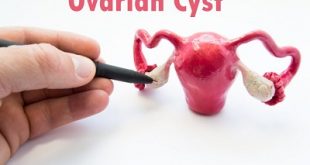About Oral Thrush
Oral thrush happens when a yeast infection develops inside your mouth. It’s also known as oral candidiasis, oropharyngeal candidiasis, or simply thrush.
Oral thrush most often occurs in infants and toddlers. It causes white or yellowish bumps to form on the inner cheeks and tongue. Those bumps usually go away with treatment.
The infection is typically mild and rarely causes serious problems. But in people with weakened immune systems, it can spread to other parts of the body and cause potentially serious complications.
Pathophysiology
C albicans causes thrush when normal host immunity or normal host flora is disrupted. Overgrowth of yeast on the oral mucosa leads to desquamation of epithelial cells and accumulation of bacteria, keratin, and necrotic tissue. This debris combines to form a pseudomembrane, which may closely adhere to the mucosa. This membrane is usually not large but may rarely involve extensive areas of edema, ulceration, and necrosis of the underlying mucosa.
Affected neonates are typically colonized by C albicans during passage through the birth canal. Hence, the risk for thrush is increased when the mother has an active vaginal yeast infection. Other sources of transmission to neonates include colonized breasts (for breastfed infants), hands, and/or improperly cleaned bottle nipples. Kissing has also been implicated.
C albicans frequently and asymptomatically inhabits the GI tract of many children and adults, and the GI tract has been implicated as a reservoir for yeast contamination of the perineum. Thus, candidal diaper rash frequently occurs in conjunction with thrush.
What Causes Thrush?
Small amounts of the candida fungus are in your mouth, digestive tract, and skin. It’s supposed to be there, and it’s usually kept under control by the other bacteria in your body. But sometimes, certain illnesses or medications — like corticosteroids or antibiotics — can disturb the balance. This can cause the fungus to grow out of control. That’s when you get thrush.
Stress can cause it. So can a number of medical conditions, like:
- Uncontrolled diabetes
- HIV infection
- Cancer
If you smoke or wear dentures that don’t fit right might, you’re also more likely to get thrush. And babies can pass the infection to their mothers while breastfeeding.
Who are at risks in developing oral thrush?
Small numbers of Candida commonly live on healthy skin and in a healthy mouth. They are usually harmless. Healthy people do not normally develop oral thrush. However, certain situations or conditions may cause an overgrowth of Candida which can lead to a bout of oral thrush. These include:
- Being a baby. Oral thrush is quite common in young babies.
- Wearing dentures, especially if they are not taken out at night, not kept clean, or do not fit well and rub on the gums.
- A course of antibiotic medicine. Antibiotics will kill harmless germs (bacteria) which live in the mouth. They do not kill Candida which may multiply more easily if there are fewer bacteria around.
- Excessive use of antibacterial mouthwash (for similar reasons to above).
- Taking steroid tablets or inhalers.
- Having a dry mouth due to a lack of saliva. This may occur as a side-effect from certain medicines (such as antidepressants, antipsychotics, chemotherapy medicines). It may also occur following radiotherapy to the head or neck, or as a symptom of Sjögren’s syndrome.
- Having diabetes.
- Having severe anaemia.
- Lacking iron, folate or vitamin B12.
- Having a poor immune system. For example, if you are taking medicines that suppress your immune system, if you have certain cancers, or if you have HIV/AIDS.
- Being frail or in generally poor health.
- Smoking. Smokers are more likely to develop oral thrush.
Oral thrush is not usually contagious. You cannot usually pass on oral thrush to other people.
What are the symptoms of Oral Thrush?
Oral Thrush usually develops suddenly. A common sign is the presence of those creamy white, slightly raised lesions in your mouth — usually on your tongue or inner cheeks. They can also be seen on the roof of your mouth, gums, and tonsils or back of your throat. Other symptoms may be:
- Redness and soreness inside and at the corners of your mouth.
- Loss of ability to taste.
- Cottony feeling in your mouth.
The lesions can hurt and may bleed a little when you scrape them or brush your teeth. In severe cases, the lesions can spread into your esophagus and cause:
- Pain or difficulty swallowing.
- A feeling that food gets stuck in the throat or mid-chest area.
- Fever, if the infection spreads beyond the esophagus.
Thrush can spread to other parts of the body, including the lungs, liver and skin. This happens more often in people with cancer, HIV or other conditions that weaken the immune system.
What are possible complications of thrush?
Systemic infection from thrush is very unlikely. People who are debilitated or have problems with their immune system are at risk of the thrush spreading to the esophagus. And, rarely, they may develop a much more serious Candida infection throughout their body. Additional risk factors for systemic infection in very ill people include:
- Central venous lines
- IV nutrition
- Broad-spectrum antibiotics
- Kidney failure
- Recent surgery
- Very low white blood cell count in the blood
Diagnosis
Diagnosis of thrush depends on the location and identifying whether there is an underlying cause.
If thrush is limited to your mouth
To diagnose oral thrush, your doctor or dentist may:
- Examine your mouth to look at the lesions
- Take a small scraping of the lesions to examine under a microscope
- If needed, do a physical exam and certain blood tests to identify any possible underlying medical condition that may be the cause of oral thrush
If thrush is in your esophagus
To help diagnose thrush in your esophagus, your doctor may recommend any or all of these:
- Biopsy. The tissue sample is cultured on a special medium to help determine which bacteria or fungi, if any, are causing your symptoms.
- Endoscopic exam. In this procedure, your doctor examines your esophagus, stomach and upper part of your small intestine (duodenum) using a lighted, flexible tube with a camera on the tip (endoscope).
- Physical exam. If needed, a physical exam and certain blood tests may be done to try to identify any possible underlying medical condition that could cause thrush in the esophagus.
Treatment for oral thrush
To treat oral thrush, your doctor may prescribe one or more of the following medications:
- Fluconazole (Diflucan), an oral antifungal medication
- Clotrimazole (Mycelex Troche), an antifungal medication that’s available as a lozenge
- Nystatin (Nystop, Nyata), an antifungal mouthwash that you can swish in your mouth or swab in your baby’s mouth
- Itraconazole (Sporanox), an oral antifungal medication that’s used to treat people who don’t respond to other treatments for oral thrush and people with HIV
- Amphotericin B (AmBisome, Fungizone), a medication that’s used to treat severe cases of oral thrush
Once you begin treatment, oral thrush usually goes away within a couple of weeks. But in some cases, it can return.
For adults who have recurring cases of oral thrush with no known cause, their healthcare provider will evaluate them for underlying medical conditions that might be contributing to thrush.
Infants may have several episodes of oral thrush in their first year of life.
Are there home remedies for thrush?
Home remedies for oral candidiasis are aimed at decreasing risk factors for thrush as well as preventing overgrowth of Candida yeast.
- Brush the teeth with a soft toothbrush.
- Rinse the mouth with a diluted 3% hydrogen peroxide solution.
- Rinse the mouth with warm saltwater.
- Avoid mouthwash as it can alter the normal flora of the mouth.
- Keep dentures clean and see a dentist if they do not fit correctly.
- Eat unsweetened yogurt while taking antibiotics.
- Lactobacillus acidophilus supplements may help maintain a healthy balance of Candida.
Home remedies that may reduce the discomfort of thrush include
- Drinking cold liquids, or eating frozen or ice treats;
- Eating soft, easy-to-swallow foods; and
- Drinking from a straw if the patches are painful.
Gentian violet (1%) is an over-the-counter natural treatment that sometimes works as a home remedy for thrush. It is a dye that kills bacteria and fungi, and it is available without a prescription. Talk to a doctor before using gentian violet.
The grapefruit seed extract is sometimes used by nursing mothers who have developed thrush of the nipples. It can be applied topically (on the skin) to the affected area or taken orally.
Apple cider vinegar has antifungal properties that may help regulate Candida in the body. Mix 1 tablespoon into 8 oz. water and drink daily.
Baking soda may also help kill the yeast that causes the fungal infection and maintain healthy pH levels in the mouth. Mix 1-2 tablespoons baking soda with water until it forms a paste. Apply the paste with a cotton ball onto the tongue and inner cheeks. Let it sit for a few minutes, then rinse with warm water. Repeat three times a day for several days. Alternately, mix ½ teaspoon baking soda into a glass of water and use as a mouth rinse twice daily.
Raw virgin coconut oil has antifungal properties. Nursing mothers sometimes use it on their nipples and the baby’s mouth to prevent the spread of thrush.
Methylene blue oral is an antiseptic that is reported to help relieve oral candidiasis. Consult a doctor before using this or any supplement.
Prevention of Oral Thrush
There are several practical considerations patients can take to reduce the risk of infection.
- Rinsing mouth out after eating, taking medication or using a corticosteroid inhaler;
- Good oral hygiene, brushing teeth twice per day;
- Going for regular dental check-ups (even if patients do not have any teeth).
For denture wearers:
- Properly cleaning dentures;
- Brushing gums with a soft toothbrush;
- Removing dentures each night;
- Ensuring dentures fit properly and are not too loose.
For infants:
- Sterilising dummies regularly and bottles after each use;
- If using corticosteroid inhalers, rinsing the mouth with water or cleaning a child’s teeth (if not able to rinse and spit) immediately after using the inhaler.
 Diseases Treatments Dictionary This is complete solution to read all diseases treatments Which covers Prevention, Causes, Symptoms, Medical Terms, Drugs, Prescription, Natural Remedies with cures and Treatments. Most of the common diseases were listed in names, split with categories.
Diseases Treatments Dictionary This is complete solution to read all diseases treatments Which covers Prevention, Causes, Symptoms, Medical Terms, Drugs, Prescription, Natural Remedies with cures and Treatments. Most of the common diseases were listed in names, split with categories.







